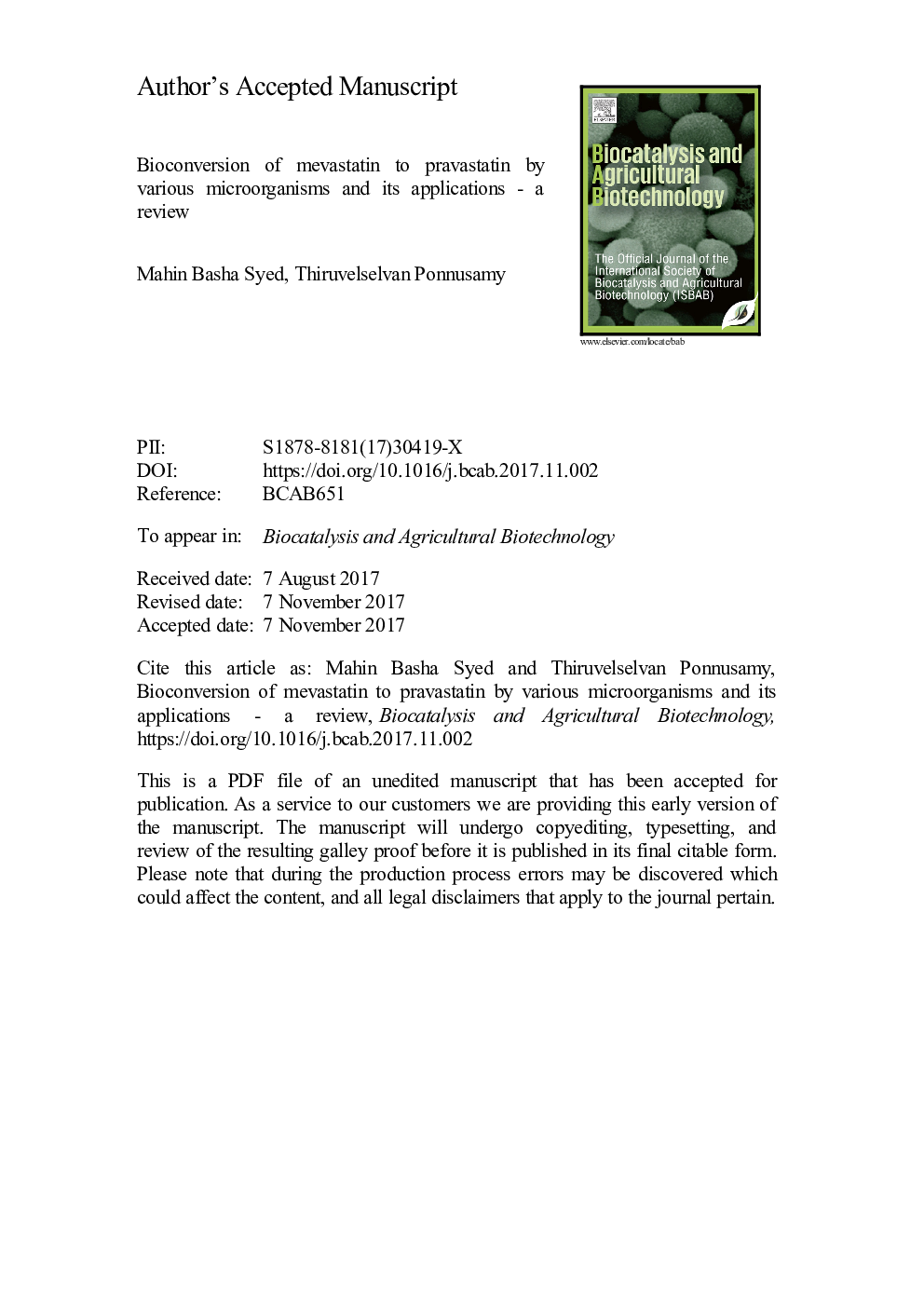| Article ID | Journal | Published Year | Pages | File Type |
|---|---|---|---|---|
| 8406020 | Biocatalysis and Agricultural Biotechnology | 2018 | 62 Pages |
Abstract
Hypercholesterolemia is considered to be an important risk factor in coronary heart disease. Statins has received a lot of attention in recent years due to control of cholesterol biosynthesis and level of cholesterol in the body, by inhibiting the enzyme 3-hydroxy-3-methylglutaryl Coenzyme A (HMG-CoA) reductase. Inhibition results in reduced levels of mevalonate in the body, leading to pleiotropic effects. Compactin and its hydroxy derivative pravastatin are natural statins and are used as hypocholesterolemic agents which are potent inhibitors of HMG-CoA reductase activity. Pravastatin was more effective drug than compactin. Various fungi and bacteria have been used for the commercial production of pravastatin. Using different strategies for improving production levels, yields have been increased more than the amount originally produced. Recently, the gene sequencing is responsible for pravastatin production has been cloned and sequenced. It has been incorporated into other fungal or bacterial species for better compactin resistant as well as for maximum bioconversion rate. This review deals with the structure and chemistry, applications, mode of action, bioconversion, and production of pravastatin. This review is an effort to compile the available information on various aspects of pravastatin.
Related Topics
Life Sciences
Agricultural and Biological Sciences
Agricultural and Biological Sciences (General)
Authors
Mahin Basha Syed, Thiruvelselvan Ponnusamy,
